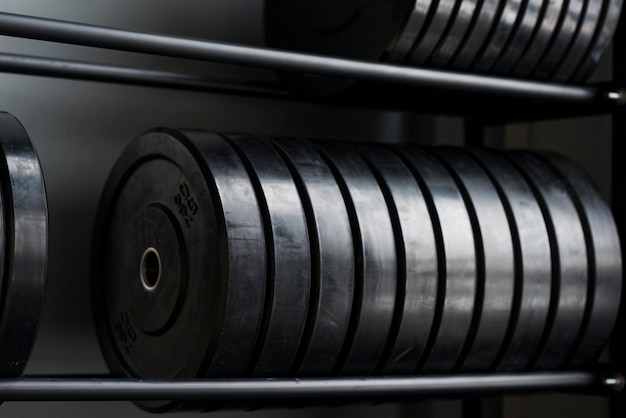Mastering Heavy Gauge Steel Coil Slitting: Unlocking Efficiency and Precision

Introduction
In the world of steel manufacturing, the ability to precisely slit and process heavy-gauge materials is a critical capability that separates industry leaders from the rest. As the demand for thicker, stronger, and more specialized steel products continues to grow, the need for advanced slitting solutions has never been more pressing. Enter the realm of heavy gauge steel coil slitting – a process that requires specialized equipment, unparalleled expertise, and a deep understanding of the unique challenges that come with working with thick, high-strength materials.
The Importance of Heavy Gauge Slitting
Heavy gauge steel coils, typically ranging from 0.043″ to 0.500″ in thickness, are widely used across a variety of industries, including agriculture, automotive, construction, and energy. These materials offer superior strength, durability, and corrosion resistance, making them essential in the production of a wide range of products, from heavy machinery to building components. However, the very characteristics that make heavy gauge steel so valuable also present significant challenges when it comes to slitting and processing.
Overcoming the Challenges of Heavy Gauge Slitting
Slitting thick, heavy-duty steel coils is no easy feat. Conventional slitting equipment often struggles to cut through the material, leading to increased waste, inconsistent quality, and extended production times. To address these challenges, steel service centers and manufacturers have invested in state-of-the-art heavy gauge slitting systems that are specifically designed to handle the demands of these materials.
The Anatomy of a Heavy Gauge Slitting Line
At the heart of a heavy gauge slitting line is a powerful slitter head, equipped with high-horsepower motors and precision-engineered slitting knives. These components work in tandem to cut the thick steel coils into narrower strips with exceptional accuracy and consistency. Beyond the slitter head, heavy gauge slitting lines often incorporate a range of advanced features, such as:
Dual Uncoilers with Regenerative Braking
Heavy gauge steel coils can weigh upwards of 80,000 pounds, making them challenging to handle and transport. Dual uncoilers with regenerative braking systems help to safely and efficiently manage the coil’s weight, reducing the risk of damage and ensuring a smooth, controlled feed into the slitting process.
Camber Trac System
Camber, or the natural curvature of a steel coil, can be a significant challenge when slitting heavy gauge materials. The Camber Trac system helps to minimize this issue, ensuring that the strips are cut with minimal distortion and maintaining a consistent, flat profile.
Automated Threading
Feeding the slit strips through the line and into the recoiler can be a labor-intensive and time-consuming task. Heavy gauge slitting lines often incorporate automated threading systems, which use push-button controls to seamlessly guide the strips into the recoiler’s gripper slot, reducing setup time and minimizing the need for manual intervention.
Robust Construction and Precision Engineering
Heavy gauge slitting requires a level of structural integrity and precision that goes beyond what is typically found in light-duty slitting equipment. Manufacturers of heavy gauge slitting lines invest heavily in the design and construction of their systems, using heavy-duty materials, large arbors, and advanced control systems to ensure consistent, high-quality results.
The Benefits of Heavy Gauge Slitting
By investing in specialized heavy gauge slitting equipment and expertise, steel service centers and manufacturers can unlock a wide range of benefits that translate directly to their bottom line:
Increased Productivity and Efficiency
Heavy gauge slitting lines are designed to maximize throughput and minimize downtime, thanks to features like automated threading, regenerative braking, and advanced control systems. This allows for faster turnaround times and higher output, ultimately boosting overall productivity.
Improved Material Utilization
The precision and accuracy of heavy gauge slitting equipment help to minimize material waste, ensuring that a greater percentage of the original coil is converted into usable, high-quality strips. This not only reduces scrap and material costs but also contributes to a more sustainable manufacturing process.
Enhanced Quality and Consistency
Slitting thick, heavy-duty steel requires a level of control and precision that can be challenging to achieve with standard slitting equipment. Heavy gauge slitting lines, with their robust construction and advanced features, are able to produce strips with exceptional flatness, dimensional accuracy, and surface quality, meeting the stringent demands of even the most discerning customers.
Expanded Capabilities and Versatility
Heavy gauge slitting equipment is designed to handle a wide range of steel grades and thicknesses, from hot-rolled and cold-rolled to coated and stainless steel. This versatility allows steel service centers and manufacturers to diversify their product offerings, tap into new markets, and better serve the evolving needs of their customers.
The Importance of Partnering with a Trusted Heavy Gauge Slitting Provider
Navigating the complexities of heavy gauge steel slitting requires a deep understanding of the process, access to specialized equipment, and a commitment to customer service and support. When it comes to outsourcing heavy gauge slitting services, it’s crucial to partner with a provider that has a proven track record of excellence and a dedication to helping their clients succeed.
Look for a heavy gauge slitting provider that offers:
- Extensive experience in handling thick, heavy-duty steel coils
- State-of-the-art slitting equipment with the latest features and technologies
- A commitment to quality, consistency, and on-time delivery
- Responsive customer service and technical support
- A wide range of complementary services, such as metallurgical testing, logistics, and toll processing
By aligning with a trusted heavy gauge slitting partner, steel service centers and manufacturers can unlock the full potential of their operations, drive innovation, and stay ahead of the competition in an increasingly demanding market.
Conclusion
As the demand for heavy-duty, high-performance steel products continues to grow, the importance of mastering heavy gauge steel coil slitting has never been more critical. By investing in specialized equipment, developing deep expertise, and forging strategic partnerships, steel industry leaders can position themselves for long-term success, delivering unparalleled quality, efficiency, and value to their customers.


